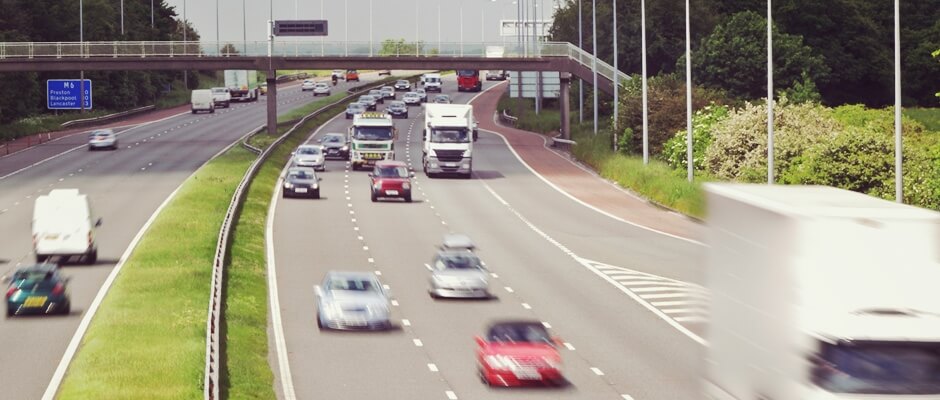Driving on the motorway for the first time can be a daunting experience. In fact, motorways are actually the safest roads to drive on ¹ but the speed you’re travelling at can make the consequences of your actions more serious.
Motorway driving tips for new drivers
- Consider carrying out Pass Plus training to help you learn how to drive on the motorway with the guidance of an approved driving instructor.
- It’s a good idea to look over the Highway Code so you can familiarise yourself with the rules, speed limits and layout of the motorway.
Read the Motorway section of the Highway Code - Plan your journey carefully — make sure you know the numbers of the junctions where you will be joining and leaving the motorway; do not rely on a Sat Nav and do not use a map while driving ²
- Make sure your car is safe to drive – check the levels of your oil, brake fluid, tyre pressure and windscreen wash fluid ³
- Think about bringing along an experienced driver for reassurance — a parent, relative or friend perhaps.
Joining and leaving the motorway
When joining the motorway, build up your speed in the slip road. Do a full observation (don’t forget the blind spot!) and only cross over when you are sure it is safe to do so.
When leaving the motorway, observe the interchange signs and make sure you are in the correct lane in good time.

The countdown markers indicate how far away the exit is, with each bar representing 100 yards. You can use this to guide you as you prepare to cross over to the slip road.⁴
Check out Directgov’s handy guide to motorway signs, signals and road markings.

Overtaking
Don’t overtake unless you’re sure it’s safe to do so. Make sure you judge the speed of the cars around you carefully and check that the lane you’ll be moving into is clear in front of you and behind. Remember to check your blind spot and signal in plenty of time.⁵

Did you know…
Drivers who hog lanes or tailgate on the motorway could face on-the-spot fines of £100 and 3 licence points since the new legislation was introduced in August 2013.⁶
Things to avoid
- In-car distractions—keep snacks, mobile phones, gadgets and anything else that could hinder your concentration out of sight.
- Rubbernecking— if there is an accident on the other side of the carriageway, do not slow down to stare at it! This can cause congestion and even accidents.
Don’t forget
- The speed limit for cars on the motorway is 70mph but keep an eye out for warning signs—these are used to display variable speed limits in the event of adverse weather, congestion or accidents.
- You’re travelling at a faster rate than other roads so your stopping distance is longer—keep a safe distance between you and the car in front, and remember to increase the gap if it’s wet, icy or foggy.⁷
- If you start to feel tired, take a break. Only resume driving when you are sure you’re safe to drive.⁸
Sources:
[1] [4][8] http://www.motoringassist.com/motoring-advice/safe-driving/motorway-safety/[2] [3] http://www.theaa.com/aattitude/driving-truths/safety/motorway-driving-tips.jsp
[5] https://www.gov.uk/motorways-253-to-273/overtaking-267-to-269
[6] http://www.bbc.co.uk/news/uk-23713732
[7] https://www.gov.uk/motorways-253-to-273/on-the-motorway-260-to-263
